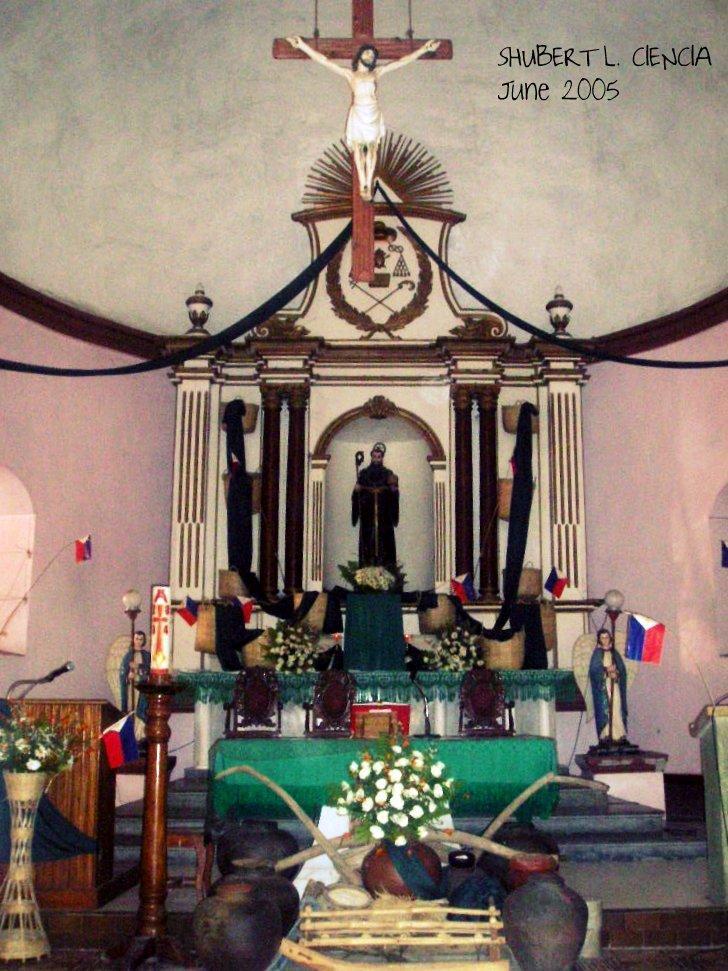
Style of the Church
A very clear Baroque style pervades the façade of the church. The main entrance is elliptically arched with a recessed entrance door fully decorated with Augustinians symbols and crowned by a triangular pediment of Baroque influence. The main entrance is flanked on both sides by large and sensuously rounded, paired columns with double capitals; one is decorated with eggs dart carving which are Greek origin; and the other one is Doric-like stylized Augustinians emblem which is followed on the next on the higher level by a circular opening with a simply decorated on the outer edge and topped by the statue niche of the impediments panel. Two large, segmented blind windows on the side a panel of the first level arranges in such a way that balance are achieved with the rest of the openings. The impediment has broken lines, very common features of the Baroque. Paired finials grace the slopping curvilinear from of the façade. A simple contrast between mass and open voids creates a peaceful scene enlivened by the decoration of the capitals and panels.
The Construction of the Church
According to an official report prepared by the 24 cabezas de barangay of Tagudin and to the Governor of Ilocos Sur in 1829, documents suggests that Farther Gutierez built the church while while he was parish priest in Bangar and assistant parish priest of the mission of Tagudin. It also states the “he was prior of Tagudin” the wall were finish in about two years. Father Francisco Hernandez continued the work in 1816, and when he died in 1821, the church was almost finished. Jorde however, states, I believe erroneously that he constructed the church, a fundamentals. According to previous cited document, the interior, the vault and the presbytery had not yet been completed as of 1829. made of stone and bricks, the church measures 40 brazas(66.80 meter) long and 8 ½ brazas(14.19 meters) wide.
Fr. Juan Sorolla, prior of Tagudin in 1832, completed the construction of the church. He also built convent now use as a school building of Saint Augustine’s School run by the Immaculate Heart of Mary sisters. Fr. Juan Sorolla installed two sundials one at the back of the church in 1841, the other in front of the town hall in 1845, the marker however, says “1848” which is mistake because Fr. Sorolla left Tagudin in 1845.
Fr. Mariano Ortiz had some restoration work made in 1880. Fr. Geronimo Rubio built the slender belfry located apart from the church in 1881. The church has been restored several times since, but its old style has always been maintained. Sevilla had always been attached to Tagudin as a visita.
Getting there
There is an extensive road network that leads to the province from various parts of Luzon. There are several bus lines that ply the Manila-Vigan route. Among these are: The Philippine Rabbit us Line, Partas Co., and Dominion. The 405 km distance from Manila to Ilocos Sur is a comfortable and scenic seven hour ride.
Bus lines in Manila that ply route to Vigan - the gateway to Ilocos Sur:
- Cubao, Quezon City
- Pasay City









